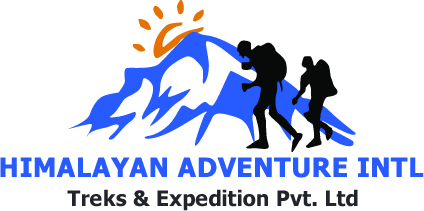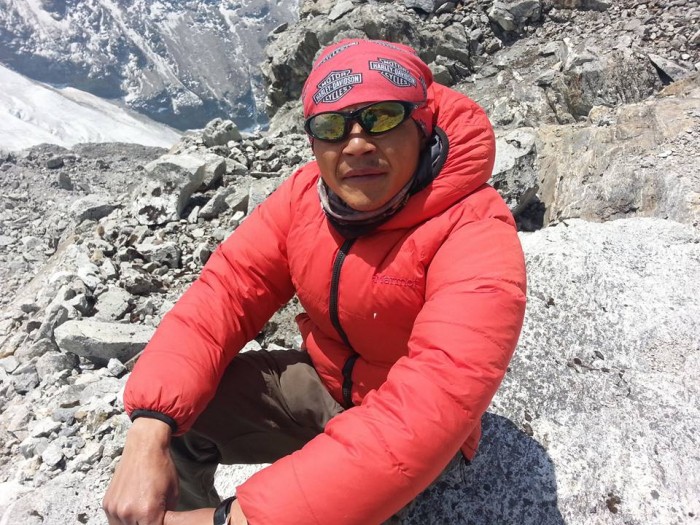Lower Dolpo is one of those rare Himalayan journeys that still feels like an expedition. Tucked into Nepal’s far-west, it blends sapphire lakes, ochre cliffs, pine forests, yak pastures, and high, wind-carved passes with a living Bon-Buddhist culture that has changed little for centuries. The trail is rugged and remote, yet deeply rewarding: turquoise Shey Phoksundo Lake shimmering beneath snow peaks, villages of carved mani stones and whitewashed chortens, and classic high passes like Numa La (≈5,310 m) and Baga La (≈5,170 m) that will set your heart thumping—in every way.
This guide from Himalayan Adventure International Treks covers everything you need to know for a safe, memorable, and well-organized Lower Dolpo Trek: best time to go, itinerary options, permits and regulations, costs, difficulty, equipment, altitude guidelines, practical logistics, and why traveling with an experienced local team matters in Dolpo.
Why Choose the Lower Dolpo Trek?
- 1) Authentic remoteness. Unlike Nepal’s busier routes, Lower Dolpo still runs on mountain time. Expect quiet trails, star-strewn nights, and tea houses or camps that feel like time capsules.
- 2) Shey Phoksundo Lake. One of the most iconic alpine lakes in Nepal—startling turquoise water set in a steep-walled cirque. The lakeside village of Ringmo is as cinematic as it gets.
- 3) High mountain passes. The Numa La and Baga La crossings are big, bold, and beautiful—true Himalayan passes that reward you with sweeping panoramas.
- 4) Cultural depth. Dolpo is a stronghold of Bon and Tibetan Buddhism. You’ll encounter gompas, prayer walls, sky burial sites from afar (never intrude), and a pastoral way of life shaped by altitude and season.
- 5) Wildlife & landscapes. Shey-Phoksundo National Park protects rare fauna (snow leopard, blue sheep, musk deer) and diverse ecosystems—from cedar and pine to barren high desert.
Facts
-
Region: Dolpa District, Mid-Western Nepal
-
Highest Passes: Numa La (≈5,310 m), Baga La (≈5,170 m)
-
Typical Trip Length: 17–21 days ex-Kathmandu
-
Accommodation: Mix of basic tea houses and camping (some stretches are camping only)
-
Start/End Point: STOL airstrip at Juphal (via Nepalgunj)
-
Best Seasons: Late spring (Apr–Jun) and autumn (Sep–Nov)
-
Trek Style: Restricted area; requires a licensed guide and a registered trekking agency permit arrangement
-
Fitness Level: Strenuous; long days, steep ascents/descents, and sustained high altitude
-
Permits: Shey-Phoksundo National Park entry + Lower Dolpo Restricted Area Permit (RAP)
Classic Lower Dolpo Circuit Itinerary (19 Days Ex-Kathmandu)
Below is a tried-and-true plan our team runs regularly. We tune the pacing, acclimatization, and camp/tea house mix based on conditions and your group’s experience.
Day 1: Arrive Kathmandu (1,400 m)
Warm welcome, gear check, and trek briefing at our office. Last-minute shopping in Thamel.
Day 2: Fly Kathmandu → Nepalgunj (150 m)
A short afternoon flight to the Terai. Overnight in Nepalgunj to position for the early STOL flight.
Day 3: Fly Nepalgunj → Juphal (2,475 m), trek to Dunai (2,140 m) — 3–4 hrs
Short scenic hop into the mountains. Descend gently on a lively path to Dunai, Dolpa’s district HQ.
Day 4: Dunai → Tarakot (2,530 m) — 5–6 hrs
Follow the Bheri River through terraced fields and cliff paths. Tarakot’s fortified history and red gompa set the tone.
Day 5: Tarakot → Laini Odar (≈3,160 m) — 6–7 hrs
A wilder day along the Barbung Khola. Camp at Laini Odar in a dramatic river gorge.
Day 6: Laini Odar → Nawarpani (≈3,575 m) — 5–6 hrs
River crossings and undulating trails lead through canyon country. You may feel the altitude creeping in—steady pacing is key.
Day 7: Nawarpani → Dho Tarap (4,040 m) — 6–7 hrs
Arrive at Dho Tarap, a culturally rich valley with monasteries and walled settlements. Big day—hydrate and slow down.
Day 8: Acclimatization in Dho Tarap
Short hikes to nearby villages (Tokyu, Tarap) and a monastery visit. Learn about Bon and Buddhist practices; photograph terraced fields and yak caravans.
Day 9: Dho Tarap → Numa La Base Camp (≈4,460 m) — 4–5 hrs
Gradual climb into higher meadows. Save energy for the pass tomorrow.
Day 10: Cross Numa La (≈5,310 m) → Pelung Tang (≈4,465 m) — 7–8 hrs
The first big pass. Switchbacks and scree; steady breathing and pacing are everything. Summit prayer flags and jaw-dropping views.
Day 11: Cross Baga La (≈5,170 m) → Dajok Tang (≈4,080 m) — 6–7 hrs
An early start for the second pass. Often snow-streaked, with wild panoramas. Descend to alpine pastures.
Day 12: Dajok Tang → Ringmo/Phoksundo (3,610 m) — 3–4 hrs
Forest, cliffs, and then—Shey Phoksundo Lake. Check into a tea house or camp lakeside near Ringmo.
Day 13: Rest/Exploration at Shey Phoksundo
Stroll to viewpoints, visit the lakeshore Bon gompa, and capture that signature turquoise-on-granite shot. Optional longer walk toward the famed lakeside cliff trail.
Day 14: Ringmo → Chhepka (2,670 m) — 5–6 hrs
Descend via the Sulighat valley, where the park’s forests and birdsong return.
Day 15: Chhepka → Jharana Hotel/nearby (≈3,110 m) — 5–6 hrs
A gentle day with time to explore side trails and waterfalls.
Day 16: Jharana → Juphal (2,475 m) — 4–5 hrs
Return to the airstrip town, a final campfire or celebratory dinner with the crew.
Day 17: Fly Juphal → Nepalgunj → Kathmandu
Buffer time built in for weather. Back in the capital by afternoon if all goes to plan.
Day 18: Contingency Day in Kathmandu
Flights in Dolpo can be delayed or canceled due to wind. This spare day protects your international connection.
Day 19: Final departure
Airport transfer or onward travel.
Notes on pacing & variants:
-
Some teams add a second acclimatization day around Dho Tarap or Ringmo.
-
In early spring or late autumn, snow may affect pass days; we keep an adaptive plan.
-
Shorter Phoksundo-focused routes exist (Juphal–Ringmo–Juphal, 8–10 days) but skip the big passes and Dho Tarap.
Difficulty, Fitness & Daily Rhythm
This is a strenuous trek. You’ll spend multiple days above 4,000 m, cross two major passes above 5,000 m, and hike 5–8 hours most days (more on pass days). Trails can be rocky, exposed, or sandy; mules and yaks share sections of the path. Prior multi-day trekking experience is highly recommended, and cardio training plus leg/ core strength work (8–12 weeks out) will improve comfort dramatically.
We maintain a measured pace with lots of breaks, steady hydration, and early starts on big days. Our crew sets up safe, hygienic camps where tea houses are unavailable and ensures hot, nutritious meals—critical at altitude.
Altitude, Safety & AMS
Even fit trekkers can feel the effects of thin air. We plan conservative ascents, include acclimatization days, and our leaders are trained in wilderness first aid and high-altitude response.
Altitude guidelines we follow:
-
Sleep no more than 300–500 m higher than the previous night when feasible.
-
Build in rest/acclimatization in key hubs (e.g., Dho Tarap, Ringmo).
-
“Climb high, sleep low” side hikes where helpful.
-
Watch for AMS (Acute Mountain Sickness) symptoms: headache, nausea, fatigue, poor sleep, appetite loss.
-
If moderate symptoms appear, we pause or descend. Severe symptoms (HAPE/HACE) trigger immediate descent and evacuation planning.
Medications & insurance:
Consult your physician about acetazolamide (Diamox) and personal health considerations. Travel insurance that covers helicopter evacuation to Kathmandu is mandatory for this trek.
Permits & Regulations (What We Arrange for You)
Lower Dolpo lies within a restricted area, so you must trek with a licensed guide through a registered trekking agency (solo independent trekking is not allowed). We handle all paperwork:
-
Lower Dolpo Restricted Area Permit (RAP) – issued per person for a defined duration.
-
Shey-Phoksundo National Park Entry Permit.
-
TIMS – currently not required for restricted-area routes, but regulations can evolve; we verify latest requirements before departure.
We’ll ask you for passport scans, visa details, insurance info, and passport photos in advance so permits can be ready when you arrive.
How Much Does the Lower Dolpo Trek Cost?
Prices vary with group size, final route, camping vs tea-house mix, and seasonal flight logistics. As a working guide:
-
2 trekkers (private): typically USD 2,700 – 3,200 per person
-
4–6 trekkers: typically USD 2,350 – 2,800 per person
-
7+ trekkers: economies of scale may bring this to USD 2,100 – 2,550 per person
What’s usually included with Himalayan Adventure International Treks
-
Professional licensed guide, kitchen crew, porters/pack animals as needed
-
Domestic flights Kathmandu ↔ Nepalgunj and Nepalgunj ↔ Juphal (round trip)
-
All permits (RAP, Shey-Phoksundo NP)
-
Accommodation in Kathmandu/Nepalgunj (per plan) and in tea houses where available; expedition-style camping with tents, dining tent, tables/chairs, and sleeping mattresses where required
-
Three meals a day on trek (nutritious, hygienic, plentiful) + hot drinks
-
Safety gear (medical kit, oximeter; supplemental oxygen on request), staff insurance and proper equipment
-
Airport transfers and trek transport according to itinerary
Common exclusions
-
Nepal visa, international flights
-
Personal trekking gear, sleeping bag/liner (can be rented)
-
Personal insurance (medical + evacuation—mandatory)
-
Tips for crew (a shared pool is customary)
-
Extras in Kathmandu/Nepalgunj, snacks, bottled/ canned beverages, Wi-Fi/charging fees in tea houses (where applicable)
We’ll provide a personalized, itemized quote after confirming dates, group size, and preferences.
Best Time to Trek Lower Dolpo
-
Spring (April–June): High passes are generally navigable from late April/May. Wildflowers appear, temperatures moderate, and skies are often clear in the mornings.
-
Autumn (September–November): Post-monsoon clarity brings excellent mountain views, stable weather, and comfortable daytime hiking.
-
Shoulder seasons: Early April/late November can be cold with lingering snow on passes; we plan carefully and may shift days to optimize safety and success.
Monsoon (Jul–Aug) is less ideal due to rain and leeches at lower elevations and cloud cover; winter (Dec–Feb) is harsh and passes can be closed by snow.
Accommodation, Food & Water
Tea houses vs camping:
Along Dunai, Tarakot, and Ringmo you’ll find basic tea houses, but the high route between Dho Tarap–Numa La–Baga La–Ringmo typically requires camping. We run a full kitchen with a trained cook and support team.
Meals:
Expect freshly prepared soups, rice, lentils, pasta, vegetables, eggs, and occasional local dishes (like buckwheat roti or Tibetan bread). We maintain strict hygiene standards; vegetarians and most dietary restrictions can be accommodated with advance notice.
Water:
We provide boiled/treated water daily. Bring two 1-liter bottles or a hydration reservoir; consider a personal treatment backup (e.g., chlorine dioxide tabs or a filter bottle).
Flights & Transportation Logistics
The Lower Dolpo trek hinges on two flight sectors:
Weather—especially wind—can cause delays or cancellations. We build buffer days into the itinerary and manage re-bookings and overnights if plans shift. Baggage allowances on STOL flights are limited; we’ll advise packing weights and manage group loads with porters/pack animals.
Responsible & Respectful Travel
Dolpo’s environment and culture are delicate. We follow Leave No Trace practices, pack out non-biodegradable waste, and limit firewood use (we cook on gas). Dress and behave modestly near monasteries and in villages, always ask before taking close-up photos, and never intrude on religious or funerary spaces. Purchasing local produce and handicrafts directly supports the communities who host us.
Packing List (What to Bring)
Clothing
-
Base layers (2–3 sets) — moisture-wicking
-
Mid layer fleece or light puffy
-
Insulated down jacket (4,000–5,000 m nights are cold)
-
Waterproof hard shell jacket & over-trousers
-
Trekking pants (2), thermal bottoms (1–2)
-
Quick-dry trekking shirts (3–4)
-
Warm hat, sun hat/buff, light gloves + insulated gloves
-
3–4 pairs trekking socks + liners
Footwear
Sleep & Bags
Accessories
-
Sunglasses (UV-A/B) & sunblock (SPF 50)
-
Headlamp + spare batteries
-
Trekking poles (highly recommended)
-
Water bottles/bladder (2–3 L capacity total)
-
Personal meds & blister kit; Diamox if prescribed
-
Small personal first aid & hygiene kit
-
Quick-dry towel, wet wipes, sanitizer
-
Power bank; charging is scarce/paid in villages
Optional
-
Lightweight sit pad, camera, book, cards
-
Lightweight microspikes (rarely needed but sometimes helpful in shoulder seasons on pass days)
We supply tents, dining setup, kitchen gear, mattresses, and all group equipment.
Tips
Aim for 3–4 aerobic sessions/week (hiking, running, cycling) plus 2 strength sessions (legs, core, posterior chain) in the 8–12 weeks before departure. Add stair or hill repeats with a pack. If you live near altitude, plan a weekend hike above 3,000 m to observe how your body responds.
Connectivity, Charging & Money
Expect minimal or no mobile signal for long stretches. Some tea houses in Dunai/Tarakot/Ringmo may offer paid charging or patchy Wi-Fi. Bring enough cash in Nepali Rupees for personal extras and tips; there are no ATMs on route. We settle staff wages and logistics transparently before and after the trek.
Daily Menu on the Trail
-
Breakfast: Porridge or muesli, eggs, chapati/Tibetan bread, tea/coffee
-
Lunch: Lentil soup, veg fried rice or pasta, pickles, seasonal greens
-
Snacks: Biscuits, peanuts, seasonal fruit, tea
-
Dinner: Soup starter, dal bhat (rice, lentils, curries), momos/pasta on rotation, dessert (custard/fruit)
We emphasize energy-dense, easily digestible foods at altitude.
Environmental & Cultural Highlights
-
Shey Phoksundo Lake (3,610 m): Turquoise water, ringed by cliffs and conifers; Bon monastery near Ringmo.
-
Cascading Waterfall near Ringmo: One of Nepal’s highest free-falling waterfalls viewed from the trail.
-
Tarap Valley: Pastoral landscapes, stone villages, walled fields; interactions with yak and goat herders.
-
Numa La & Baga La: Textbook Himalayan passes with subtler beauty than the Khumbu giants yet every bit as compelling.
-
Wildlife: Blue sheep, Himalayan griffon, lammergeier, elusive snow leopard habitat—bring binoculars.
Is Lower Dolpo suitable for first-time trekkers?
It’s better suited to trekkers with prior multi-day experience because of the altitude, remoteness, and pass days. Determined first-timers with solid training and a positive mindset have succeeded under our careful pacing.
How cold does it get?
Nights around –5 °C to –10 °C are common at higher camps in spring/autumn; windchill on passes can be severe. We plan early starts and ensure proper gear.
What about leeches or monsoon issues?
Leeches may appear in lower forests in July–August. We avoid monsoon season for Dolpo due to rain, cloud, and flight disruptions.
Do I need crampons?
Not typically in main seasons, but microspikes can be useful in shoulder periods if a pass has hard morning snow. We’ll advise based on the latest conditions.
Can vegetarians/vegans be accommodated?
Yes—vegetarian is easy, vegan with some limitations in very remote stretches. Please inform us in advance.
Is drinking water safe?
Yes, we provide boiled/treated water daily. Bring your bottles/reservoir and optionally a personal purifier.
What if flights cancel?
We build buffer days and manage re-booking. Very rarely, overland evacuation by jeep/mule is considered; we handle the logistics.
Why Trek Lower Dolpo with Himalayan Adventure International Treks?
Experienced Dolpo specialists. Our guides and crews have logged dozens of expeditions across Dolpo and the wider west—knowledge that matters when the wind kicks up at Juphal or snow dusts the passes.
Safety-first planning. Conservative pacing, acclimatization built in, robust medical kits, sat-phone/radio access where required, and clear evacuation protocols.
Fair, local employment. We hire and train from Dolpo and adjacent districts, insure our crews, and pay ethically (including proper equipment and warm clothing).
Quality equipment & logistics. Four-season tents, warm dining shelters, clean kitchen practices, and thoughtful menus geared for altitude and recovery.
Customization. Whether you prefer an extra acclimatization day, a photography focus, or a hybrid tea house + camping schedule, we tailor the route to your goals.
Responsible Booking & Next Steps
-
Pick a window in Apr–Jun or Sep–Nov and share flexible dates (helpful for flight/weather buffers).
-
Confirm group size and any special requirements (dietary, medical, gear rental).
-
We send a detailed proposal: day-by-day plan, inclusions/exclusions, final price, and suggested packing.
-
Reserve with a deposit so we can issue restricted permits and lock in STOL seats.
-
Train smart, arrive a day or two early if possible, and let us handle the rest.
Sample Inclusions Snapshot (Customizable)
-
All restricted-area permits and Shey-Phoksundo NP entry
-
Licensed English-speaking guide, cook, porters/pack animals
-
Domestic flights (KTM↔Nepalgunj↔Juphal) with airport transfers
-
3 meals/day on trek; boiled/treated water
-
Tea houses where available + camping setup (tents, dining tent, kitchen, sleeping mattresses)
-
Medical kit, oximeter; staff insurance and proper field gear
-
Welcome/ farewell dinners in Kathmandu
Upgrades/Options: single-room supplement in cities, private tent, oxygen, satellite communicator rental, extra acclimatization days, photography/film logistics.
The Lower Dolpo Trek is a Himalayan original—remote, culturally rich, and scenically addictive. It asks for commitment and rewards you with quiet valleys, proud villages, and two memorable passes you’ll talk about for years. If you’ve done Annapurna or Everest and want something wilder—or if your heart is set on a true “expedition-style” journey without technical climbing—Dolpo is the one.
Ready to plan your Lower Dolpo adventure?
Drop us your dates and group size, and Himalayan Adventure International Treks will craft a safe, flexible, and unforgettable itinerary around Shey Phoksundo, Dho Tarap, Numa La, and Baga La—with the right pacing, the right crew, and the right spirit.

 Plan Your Trip Now
Plan Your Trip Now 



